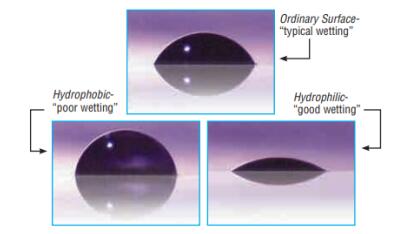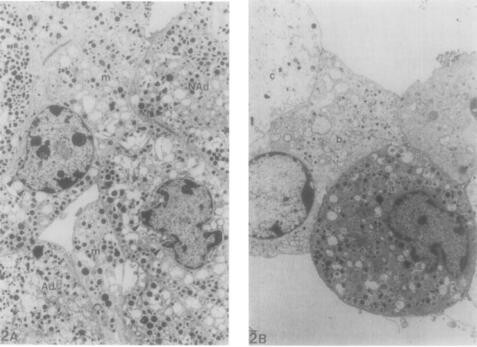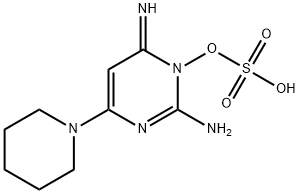What is Minoxidil sulphate?
Feb 17,2020
Minoxidil sulfate was the drug approved by the FDA for the treatment of androgenetic alopecia (hair loss). Its effectiveness has largely been demonstrated in younger men (18 to 41 years of age), the younger the better, and in those with balding in the central (vertex) portion of the scalp (graph 1). The water solubility characteristics of minoxidil sulfate increases the absorption [1].

Graph 1 Minoxidil sulfate in a hair regrowth product.
Before that, minoxidil sulfate had been used as vasodilator drug prescribed as an oral tablet to treat high blood pressure and it’s can used for refractory hypertension and renal hypertension. Minoxidil sulfate has been used to better understand the blood-brain tumor barrier in syngeneic and allogeneic rat studies and has demonstrated to increase tumor permeability [2].
Buhl AE and the team proved that minoxidil sulfate is the active metabolite that stimulates hair follicles. An important step in understanding the minoxidil's mechanism of action on hair follicles was to determine the drug's active form. Researchers used organ-cultured vibrissa follicles test whether it is minoxidil or its sulfated metabolite, minoxidil sulfate, that stimulates hair growth. Follicles from neonatal mice were cultured with or without drugs and effects were assessed by measuring incorporation of radiolabeled cysteine in the hair shafts of the treated follicles. Assays of minoxidil sulfotransferase activity indicated that vibrissae follicles metabolize minoxidil to minoxidil sulfate. Dose-response studies showed that minoxidil sulfate is 14 times more potent than minoxidil in stimulating cysteine incorporation in cultured follicles. Three drugs that block production of intrafollicular minoxidil sulfate were tested for their effects on drug-induced hair growth. Diethylcarbamazine proved to be a noncompetitive inhibitor of sulfotransferase and prevented hair growth stimulation by minoxidil but not by minoxidil sulfate. Inhibiting the formation of intracellular PAPS with chlorate also blocked the action of minoxidil but not of minoxidil sulfate. Acetaminophen, a potent sulfate scavenger blocked cysteine incorporation by minoxidil. It also blocked follicular stimulation by minoxidil sulfate apparently by directly removing the sulfate from the drug. Experiments with a potent minoxidil analog that also forms a sulfated metabolite, showed that its activity was inhibited by both chlorate and diethylcarbamazine. These studies show that sulfation is a critical step for hair-growth effects of minoxidil and that it is the sulfated metabolite that directly affects hair follicles [3].
Reference
[1] https://beloorbayir.com/minoxidil-sulfate-usp.php
[2] https://www.chinaterritory.com/API-anti_hair_loss_CAS_83701_22_8_Minoxidil_Sulfate_Powder-337.htm
[3] Buhl AE et. al., Minoxidil sulfate is the active metabolite that stimulates hair follicles, J Invest Dermatol. 1990 Nov;95(5):553-557.
- Related articles
- Related Qustion
- Minoxidil sulphate: History and Pharmacokinetics Mar 28, 2024
Minoxidil sulphate, approved for hypertension, later found use in treating baldness due to hypertrichosis. Its absorption and metabolism inform treatment optimization.
- Minoxidil sulphate: origin, mechanism of action and applications Oct 17, 2023
Minoxidil sulphate is a commonly used treatment for hair loss, promoting hair regrowth and reducing hair loss.
See also
1H,1H,2H,2H-Perfluorodecyltriethoxysilane, also named perfluoroalkylethyltrimethoxysilane (PFATES), is used to bond poly(tetrafluoroethylene) films to silicon wafers.....
Feb 17,2020Chemical ReagentsTriphenyl phosphite (TPP) is the chemical compound with the formula P(OC6H5)3. This colourless viscous liquid is the ester of phosphorous acid and phenol.....
Feb 17,2020Inorganic acid EstersMinoxidil sulphate
83701-22-8You may like
Minoxidil sulphate manufacturers
- Minoxidil sulphate
-

- $0.00 / 1Kg/Bag
- 2025-12-13
- CAS:83701-22-8
- Min. Order: 1KG
- Purity: 99%min
- Supply Ability: 1000 KGS
- Minoxidil sulphate
-

- $5.00/ KG
- 2025-12-12
- CAS:83701-22-8
- Min. Order: 1KG
- Purity: 99% hplc
- Supply Ability: 500TONS
- Minoxidil sulphate
-

- $10.00 / 1KG
- 2025-12-11
- CAS:83701-22-8
- Min. Order: 1KG
- Purity: 99%
- Supply Ability: 10 mt






